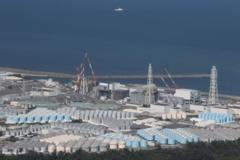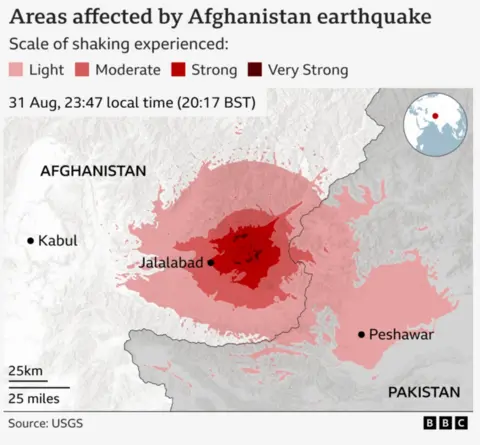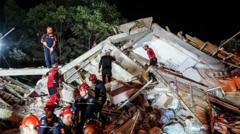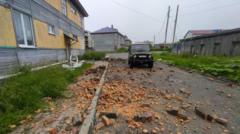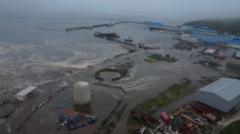With the threat of tsunamis looming, all 4,000 workers at Japan's Fukushima nuclear plant were evacuated on Wednesday. This emergency followed an 8.7 magnitude earthquake which struck off the eastern coast of Russia, causing tsunami alerts across the Pacific. Although the plant's operator reported no detected "abnormalities," the evacuation has stirred painful memories for residents in the Fukushima prefecture, reminiscent of the catastrophic events of March 2011.
Back then, a massive 9.0-magnitude earthquake and the subsequent tsunami led to one of the worst nuclear disasters in history. Emergency generators failed, resulting in a meltdown that released hazardous materials into the environment. The aftermath was devastating, with over 18,000 lives lost and 150,000 residents forced to evacuate, many of whom have yet to return due to ongoing radiation concerns.
Currently, 880 metric tons of hazardous debris remain trapped within the Fukushima plant, emphasizing the monumental challenge of its decommissioning process. The Tokyo Electric Power Company Holdings (Tepco), which oversees the plant, faces an estimated cleanup cost of $145 billion and requires decades to remove the dangerous materials.
Problems are compounded by the necessity to manage ongoing water contamination. Tepco has been cooling the reactors with an influx of water, creating numerous storage tanks that occupy critical land. This year, the company began releasing treated wastewater into the ocean, a move met with considerable backlash despite the United Nations' reassurance of its safety for the environment.
In the wake of the Fukushima disaster, Japan’s government initially moved away from nuclear energy. However, a shift back towards nuclear dependency has been observed, as officials aim to meet the rising energy demands from sectors like technology. Amidst increasing dependence on nuclear power, local opposition has emerged, particularly in light of the latest tsunami alerts.
Japan's geographical positioning along the tectonically active Ring of Fire means it experiences about 1,500 earthquakes annually, highlighting the country's vulnerability to seismic activity. Despite rigorous earthquake preparedness drills and building regulations, the public remains apprehensive about catastrophic earthquakes that pose a significant threat to lives and infrastructure.
As events unfold in Fukushima, the dual challenges of ensuring safety and navigating a complex energy future continue to provoke discussion and concern among citizens and experts alike.
Back then, a massive 9.0-magnitude earthquake and the subsequent tsunami led to one of the worst nuclear disasters in history. Emergency generators failed, resulting in a meltdown that released hazardous materials into the environment. The aftermath was devastating, with over 18,000 lives lost and 150,000 residents forced to evacuate, many of whom have yet to return due to ongoing radiation concerns.
Currently, 880 metric tons of hazardous debris remain trapped within the Fukushima plant, emphasizing the monumental challenge of its decommissioning process. The Tokyo Electric Power Company Holdings (Tepco), which oversees the plant, faces an estimated cleanup cost of $145 billion and requires decades to remove the dangerous materials.
Problems are compounded by the necessity to manage ongoing water contamination. Tepco has been cooling the reactors with an influx of water, creating numerous storage tanks that occupy critical land. This year, the company began releasing treated wastewater into the ocean, a move met with considerable backlash despite the United Nations' reassurance of its safety for the environment.
In the wake of the Fukushima disaster, Japan’s government initially moved away from nuclear energy. However, a shift back towards nuclear dependency has been observed, as officials aim to meet the rising energy demands from sectors like technology. Amidst increasing dependence on nuclear power, local opposition has emerged, particularly in light of the latest tsunami alerts.
Japan's geographical positioning along the tectonically active Ring of Fire means it experiences about 1,500 earthquakes annually, highlighting the country's vulnerability to seismic activity. Despite rigorous earthquake preparedness drills and building regulations, the public remains apprehensive about catastrophic earthquakes that pose a significant threat to lives and infrastructure.
As events unfold in Fukushima, the dual challenges of ensuring safety and navigating a complex energy future continue to provoke discussion and concern among citizens and experts alike.

